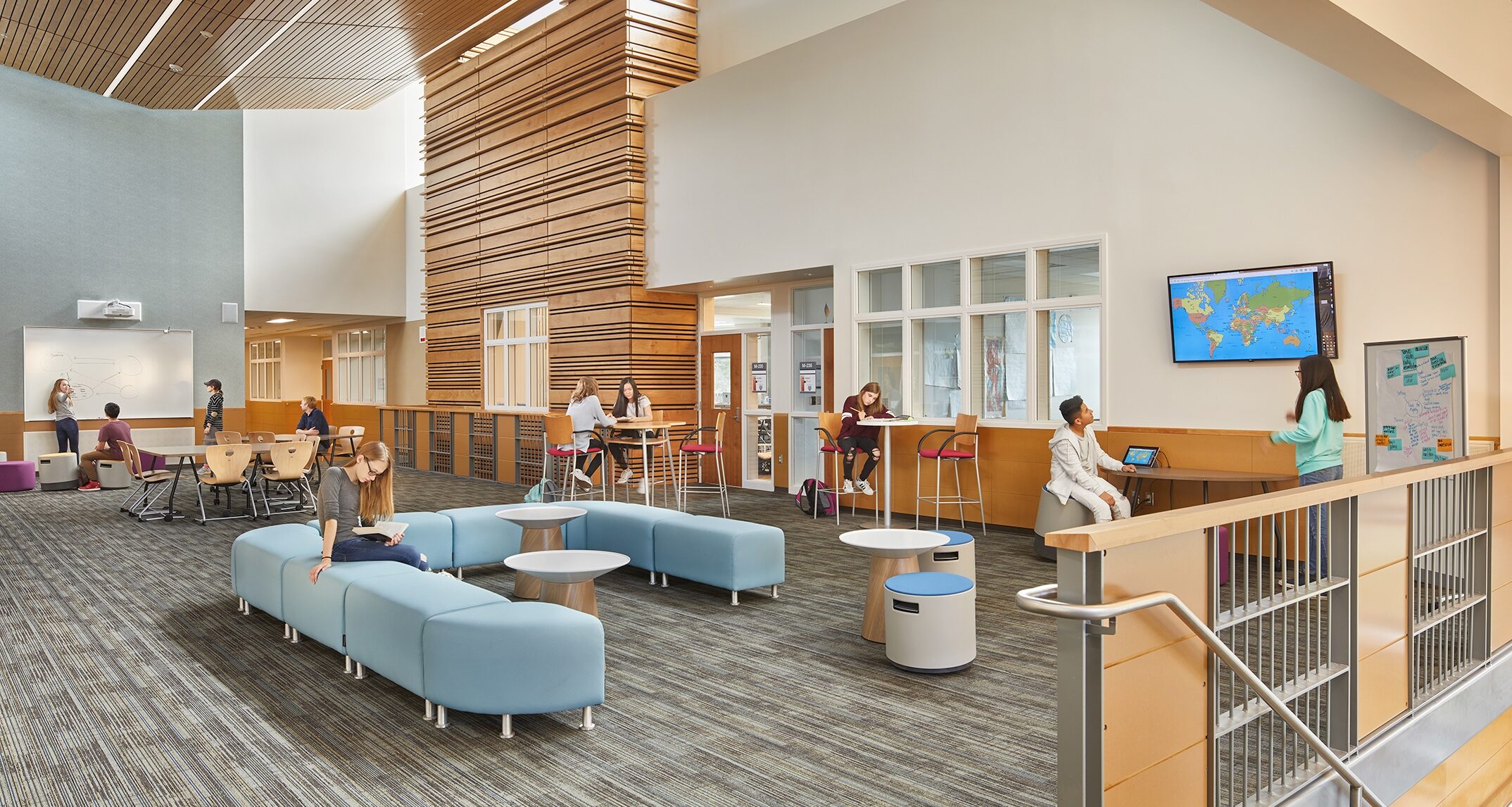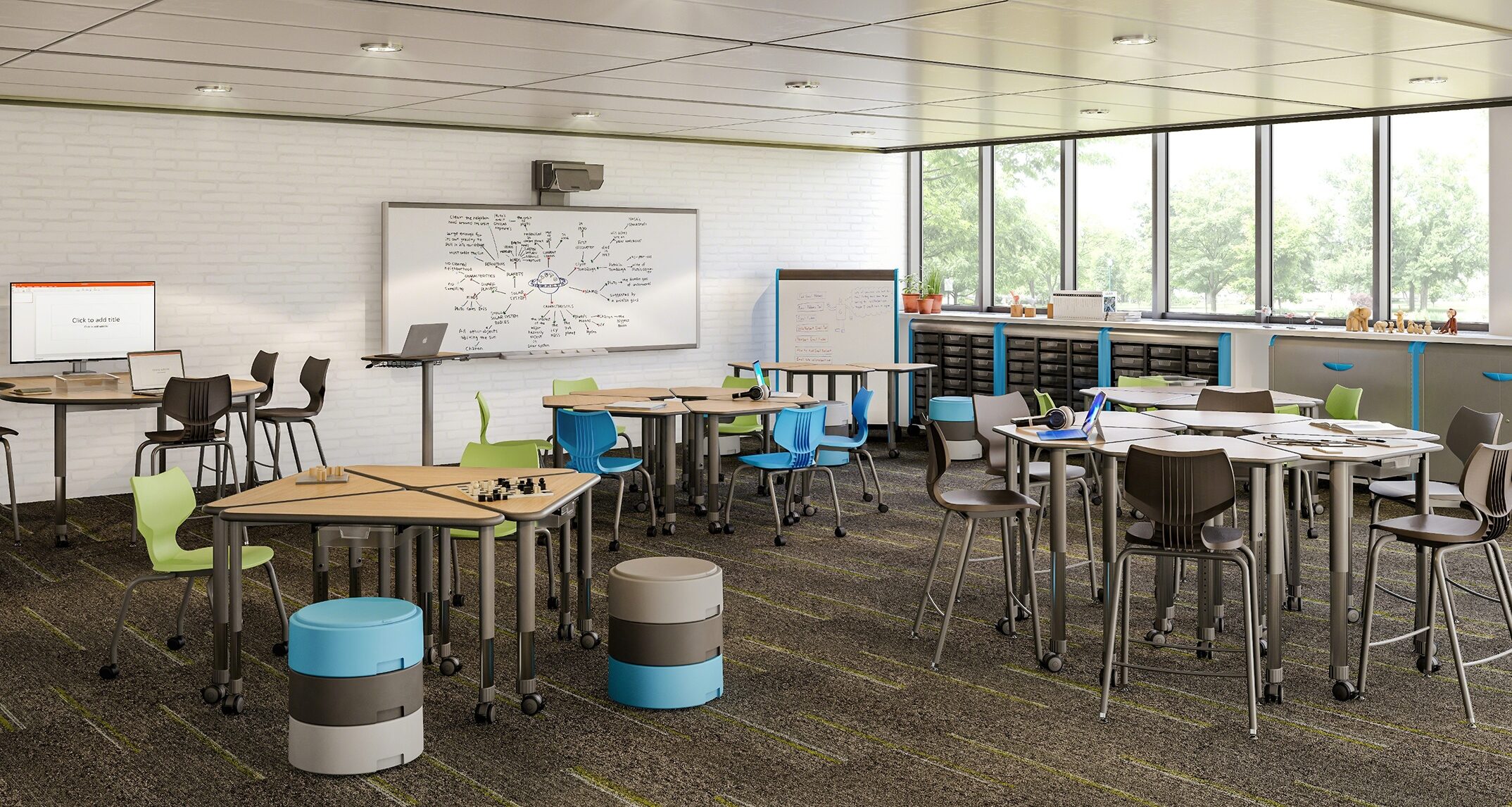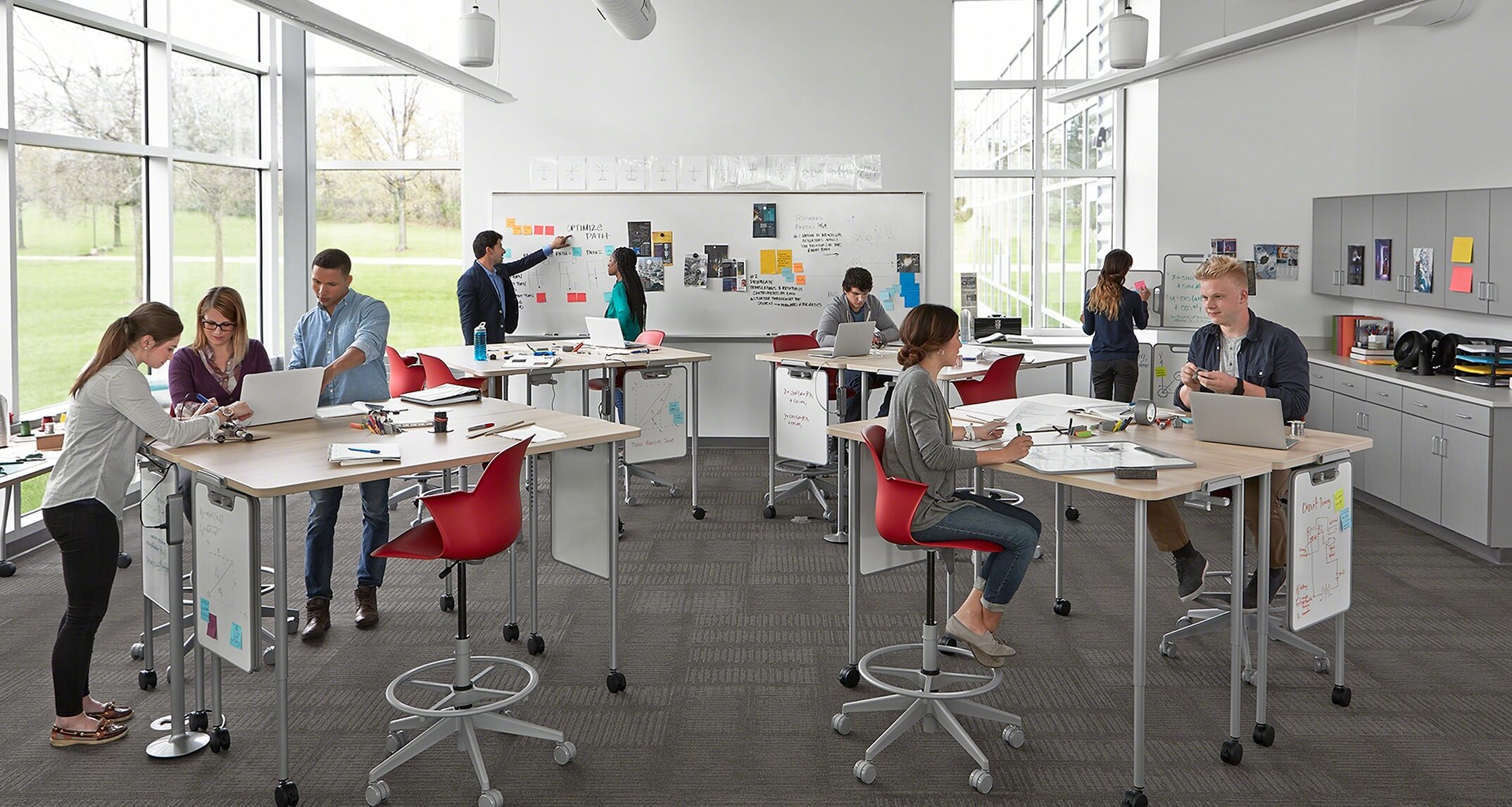It’s Not a Garnish! Treating Furniture as the Main Course in K-12 Design

Image created by Scott Nicks
It’s not a garnish! And yet, many still want to put it into the dessert category. Like it’s a bonus, an extra, the cherry on top. In the evolving world of education, we can’t minimize it anymore: furniture is the main course in K-12 design and it needs to be treated as such. For decades, the recipe for K-12 furniture was equal parts durability and cost, with a “no need to look further” attitude. The problem with that approach is that furniture has a huge impact on both the instructor and the student.
Poor furniture selection can impede the way an instructor teaches a subject, and it can potentially limit the way they engage with their students. Clunky, heavy furniture can slow down classroom activities and make individualized learning nearly impossible. Make no mistake about it; students aren’t impressed either. Ask any student about the furniture in their classroom and you will most likely get responses like, “it’s so big it makes it difficult to move around the room,” “the chairs aren’t comfortable,” or “the furniture is always in the same configuration.”

Variety and versatility were key factors when selecting furniture for Renton’s Vera Risdon Middle School. The combination of moveable stools, benches, and desks allow students and teachers to customize shared learning spaces to support various curriculum needs. – NAC Architecture
Furniture Limitations in Action
In a recent volunteer exercise, NAC worked with local high school students on solving a design problem as part of an elective class. We began noticing that the furniture in the classroom was restricting our ability to engage students in group discussions and design charrettes, so we suggested that we move to the library. While the library furniture was still heavy and cumbersome to move, we did have more space to manipulate the configuration to support group work. Having the ability to shift the seats to create a more intimate setting influenced the ability to collaborate and engage in conversation. This slight adjustment got the students to pay attention, speak up, and ask questions.

Using moveable desks and flexible seating allows teachers to quickly and easily transition from a whole-class discussion to small-group collaborative learning. Image courtesy of Smith System
The Right Furniture Recipe
Research by Steelcase1 shows that rearranging the rows of desks into grouped configurations improves all of the following aspects of learning:
- Ability to engage in preferred learning methods
- Active involvement
- Collaboration
- Creation of an enriching experience
Additional studies show that active learning environments are linked to higher attendance rates, conceptual gains of more than 20%, increased classroom engagement of both students and faculty, and higher final grades up to 10%.2 This proves that furniture is a critical component to design and can no longer be overlooked.
Imagine if every classroom in your school could function just like our experience in the library? What if your furniture could help facilitate learning and student engagement? Imagine furniture that can be altered for a specific lecture, or give students the ability to take ownership of their learning.

Taller desks give students the option to sit or stand, and facilitates easy movement and collaboration between groups. Image courtesy of Steelcase
Below is the recipe for selecting great furniture for your school.
Do your research. Talk to staff and students to get a better understanding of what their needs are, both in and out of the classroom. The K-12 furniture market is filled with great options that are easily overlooked when approving purchase orders for typical student desks and chairs. Utilize your design professionals in your research; they can help share the latest and greatest in K-12 design.
Test run the options. Furniture manufacturers are more than willing to let you demo products. We suggest partnering with them to try out pieces you are interested in. Mock up a new classroom as a trial run. Not only will you learn if the new products are durable enough, you will also learn what works well for your staff and students.
One furniture layout does not fit all. You will find through this process that not all teachers will want or need the same types of furniture. Different subjects, different teachers, and different teaching styles will mean that not all classrooms will benefit from the same furniture and/or layout.
Develop a “menu” of furniture options. We know it is not realistic for every teacher to demo furniture and hand pick every item that ends up in their classroom. However, with enough feedback from test runs and product demos the district can create a list of options (with parameters) for varying furniture throughout the building. This will allow each space a level of customization, as well as simplify orders, replacements, and long-term maintenance moving forward.
It’s time to focus on new furniture solutions for our K-12 learning environments. By using the recipe above, as well as moving the FF&E budget to the forefront when planning your facility, we can create engaging and collaborative educational environments. Environments that put the needs of students and instructors first. Environments that create flexible classrooms that serve the long-term needs of all users.
1 Steelcase, June 2015, How Classroom Design Affects Engagement, Retrieved from https://www.steelcase.com/research/articles/ how-classroom-design-affects-student-engagement/
2 Kemme, Dan, 2017, How Classroom Furniture Affects Student Success, Retrieved from https://www.dpsdesign.org/blog/active-learning-classrooms
